Google's robomobils are still not ready for a massive appearance on the roads. Why?

Google Corporation recently noted an important event: its unmanned cars drove more than 2.5 million kilometers along the roads. Tests that are conducted by the company show that these cars do their job well - driving from point A to point B without human control. But there are still problems, and there are quite a lot of them. Because of these problems, Google mobiles are still unable to drive on city roads in droves.
The main reason is that the company's vehicles, although very technically advanced, are machines. The unmanned cars control system is a weak form of AI, which is unable to solve many non-standard tasks. What are these tasks? Let's see, Google recently shared this data with the public.
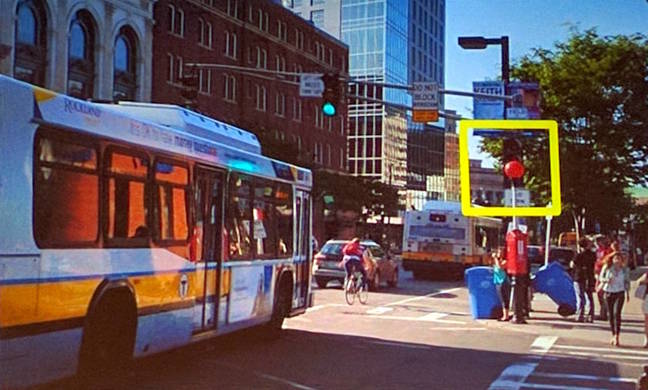
')
One of the most difficult tasks for a computer is the correct identification of traffic lights. If you take a closer look, it becomes clear that the photo is not a red signal at all, but an unusual red lamp covering the traffic light. Robomobile may well recognize this as a corresponding traffic light signal and stop. Will there be time to slow down traveling cars? The question is rhetorical.
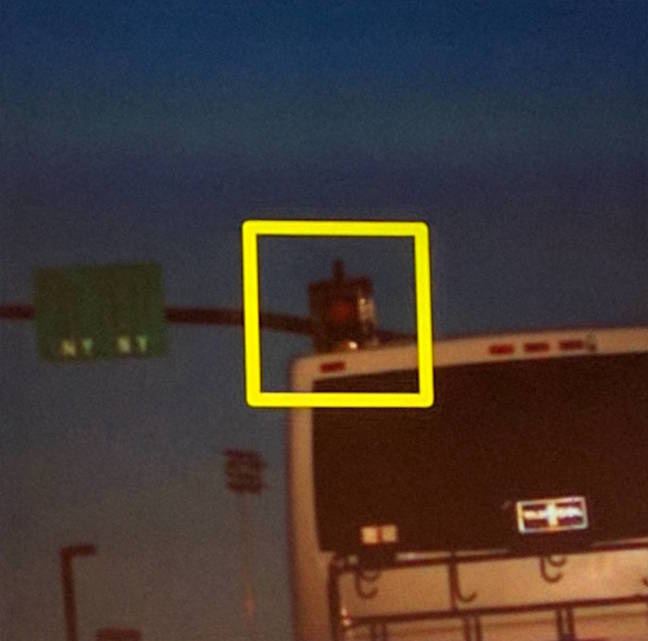
Another photo - the bus closes all the lights of the traffic light, except the red one. What to do - stop or not? The signal does not seem to be lit, but it is the only one, and the red color is visible. This situation is another problem for the mobile.

And another option - too bright sunlight. As a result, it is unclear what color signal at the traffic lights. Is it red or yellow? Or even a foreign object? Robo mobile AI is extremely difficult to find the answer to these questions.
For a man, all this does not represent a particular problem. The solution of such problems takes us a split second. Using the resources of our brain, we are able to solve even more complex issues that cannot be solved logically. Computer systems are suddenly unable to solve this type of problem.
 The examples cited above were demonstrated by Daniel Rosenband, a specialist who is involved in the project of Google unmanned vehicles. “Determining traffic lights and other signals is a difficult task,” he says. In most cases, the AI checks the camera's visible lens with an example from the base, and “understands” that this is, for example, a green or yellow traffic signal.
The examples cited above were demonstrated by Daniel Rosenband, a specialist who is involved in the project of Google unmanned vehicles. “Determining traffic lights and other signals is a difficult task,” he says. In most cases, the AI checks the camera's visible lens with an example from the base, and “understands” that this is, for example, a green or yellow traffic signal.But on the road is not so simple. There are quite a few situations that prevent AI from understanding what is happening on the road and what the traffic light shows. Here is another example of a difficult situation for a mobile. A green circle on a shield may well be regarded by a computer control system as a call to move forward. Now the company's engineers are actively working to create an advanced system for identifying traffic light signals and road signs. A number of results obtained during the work are described here .
Elements of the road like this - and at all a bad dream for a computer control system.
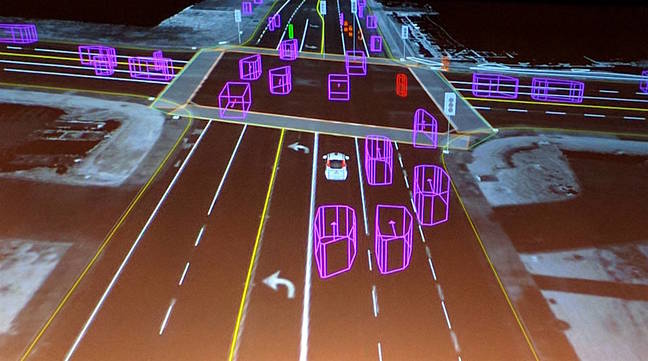
Here's what Google sees on the road: pink objects are cars, white and yellow stripes are road markings
Motorists-people operate on this area according to the rules of traffic rules and their own intuition. With a dense traffic it is difficult to quickly determine where you can drive and where to go. Robomobil, in spite of all the processing speed of the received data available to it, is still not well oriented in such places.

And these are the objects on the road, the markings and the trajectories of other cars, as the robot system sees them.
Another problem is the weather. In California, Mountain View, where the main tests are conducted robobiles, everything is fine with the weather. For the most part, the weather here is clear and sunny, not too hot. But in Arizona everything is not so perfect. It is hot here, almost always sunny. And the direct sun rays heat up the elements of the “drone” dome with all its sensors, cameras and sensors. There are failures. The same situation is in Nevada, where Google is also testing its autonomous machines.
Now the company's engineers are looking for a way to protect and cool the roof of the car with its control dome.
And more problems
But bright sunshine and high temperature are only a small fraction of the difficulties encountered by the participants in the Google cars project. Snow, heavy rain, reckless drivers, heavy traffic on the roads, unusual road signs, crazy cyclists and bikers - the AI of a car must respond adequately and quickly enough to all of this. The reaction rate of the system must be very high, otherwise it will not be possible to prevent a potential accident.
AI can be trained to recognize the road signs repairmen and go around the pit, if there is a fence around. And what if there is a pit, but there is no fence. What if road workers give drivers signals with their hands, showing where to go? Can an AI car know what the traffic police want? All this must be considered when creating a robotic mobile.
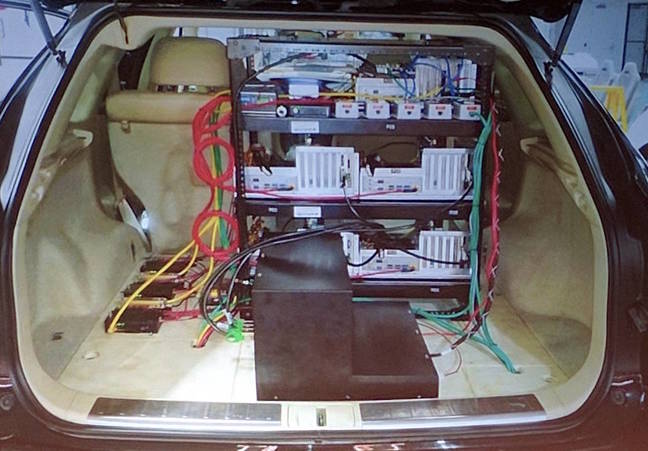
This is how a prototype of a Google unmanned car control system looked before.
If the system suddenly "sees" a rubber ball, prancing ahead along the road - what should be done in this case? Can the machine "figure out" that there may be a child nearby? No, it will not, this situation must be foreseen by the developers and methods of solving it should be entered into the computer.
Computer systems of cars usually work with exact maps , where all objects that require attention are indicated. For orientation in space, the car works with GPS. What happens if the GPS becomes unavailable? This is a very real situation in a city where high houses overlap the signal. In addition, it is necessary to take into account situations in which the map does not correspond to reality, which also happens quite often.
In the control program you need to enter all, absolutely all possible traffic situations, even the most rare and unlikely. Google engineers are trying to do this. "We are working on the test sections of the road, working out situations that might happen when driving on a regular road," says Rosenbend. But, according to him, nothing will replace the test race in real conditions.
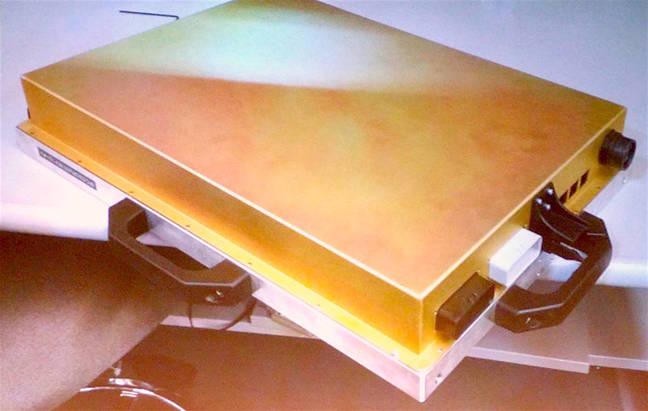
And this is how Google’s machine control system looks like now
Sometimes the idea is expressed that along the roads you need to install special signs and signals for ro-mobiles - in this case, everything will become much easier. But to realize such an idea is difficult, and now nobody even considers it as a real proposal. Maybe car manufacturers with AI do not mind, but the authorities will not go for it now - this is too expensive, and the result is not too obvious.
Therefore, robility vehicles have to learn to exist in the world that man has built.
By the way, it is now unknown what electronic components Google uses in the control system for its machines. Perhaps these are unique, self-created parts. Maybe ordinary electronic "parts" purchased from reputable manufacturers. Or maybe both custom and conventional components are used. Rosenbend still voiced some details.
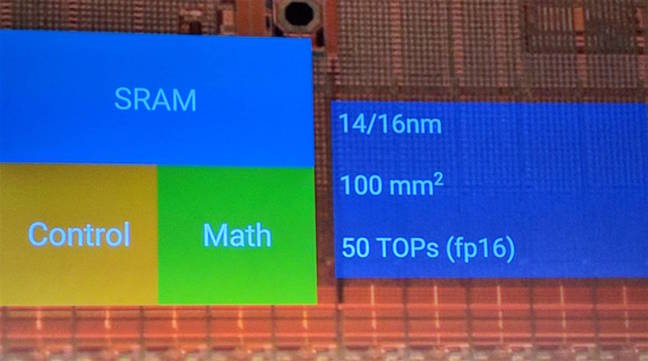
In roboMobiles, the company uses chips manufactured according to the 14 or 16 nm process technology. System performance - 50 trillion 16-bit floating point operations per second. Such a system, according to company representatives, is the “golden mean” between speed and accuracy.
Google is about to launch the sale of its unmanned vehicles in 2020. Will it succeed? The project team is sure that yes. In spite of any problems, the company's engineers are going to complete the work on time.
Source: https://habr.com/ru/post/396951/
All Articles